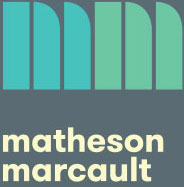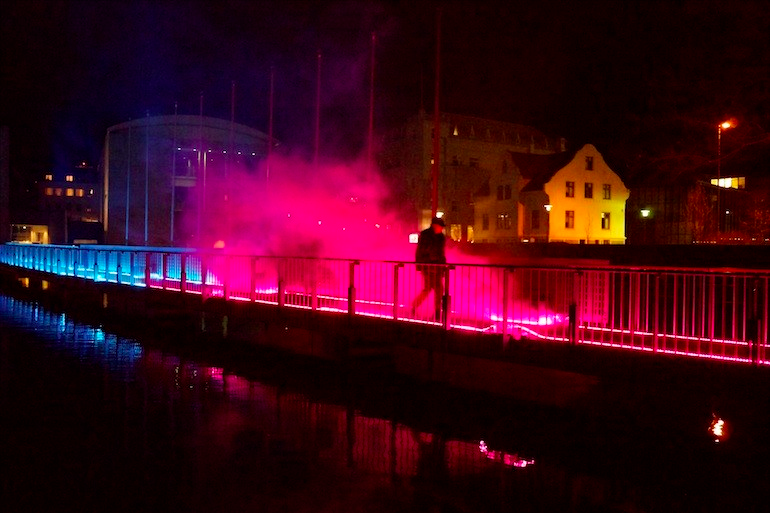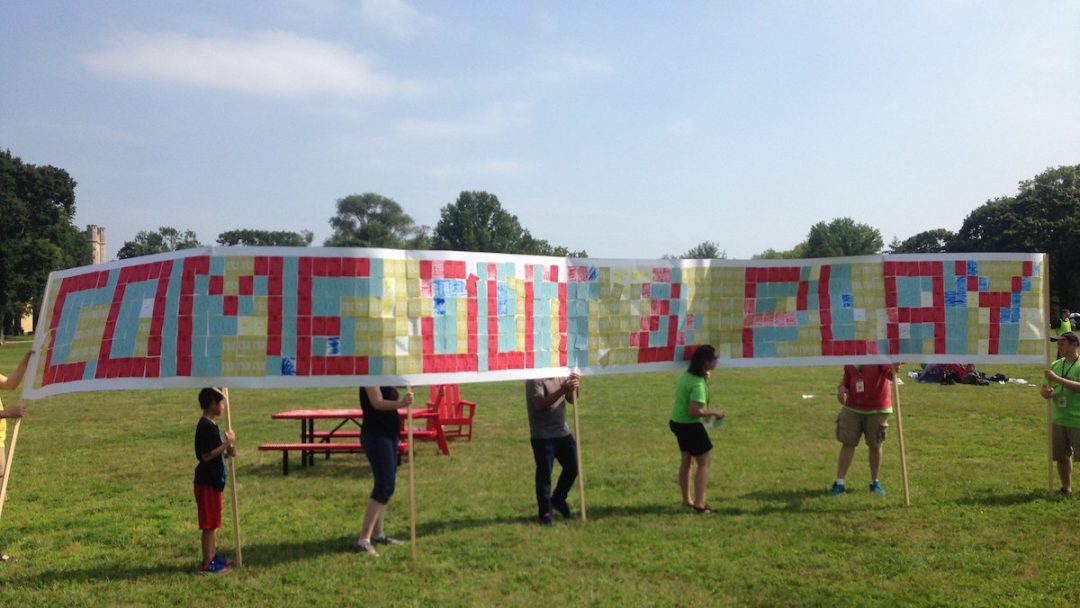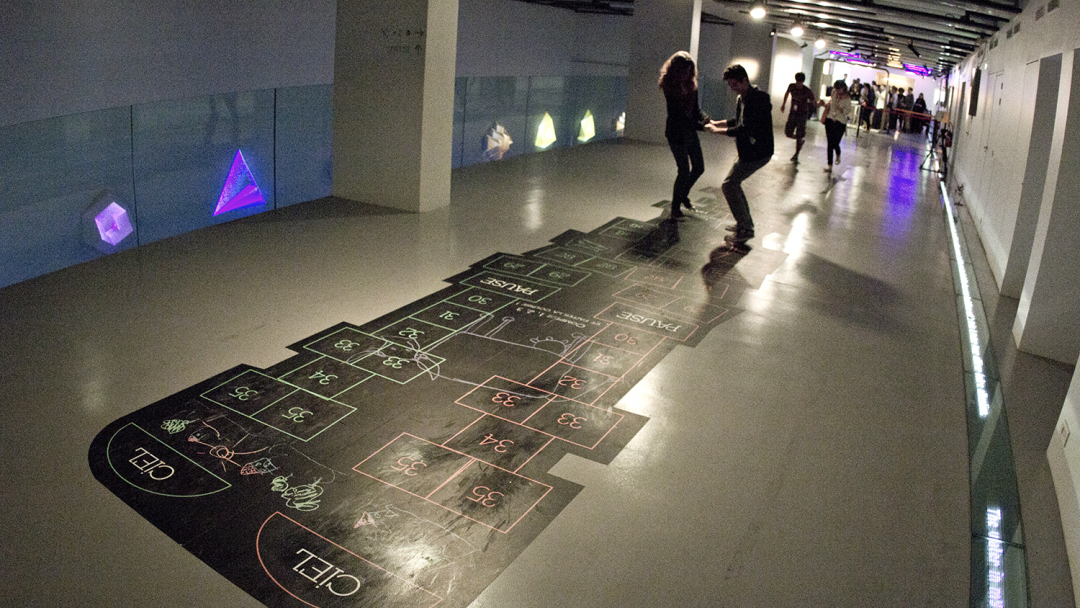As part of our research project for the King’s College London Arts and Humanities Festival, we’ve been interviewing different curators, designers, artists and architects about playful work for public space. This interview is with Tine Bech, a multidisciplinary artist and researcher. Her work explores the potential for transforming environments and human behaviour through the creative possibilities of play and game-making.
Her PhD thesis Playful interactions: A Critical Inquiry into Interactive Art and Play is available online, and gives a really interesting overview of some of her work and the things she’s discovered making it. The image above shows her work On The Bridge.
US: I wanted to ask about the invitations your work extends to people, these different invitations to play. You talk a lot in your thesis about how tiny little details make a big difference to how people respond – like with Catch Me Now, you talk about the difference made by how long a spotlight pauses for and how big it is, what colour it is. [Catch Me Now is a gently roaming spotlight that responds when you step into it, expanding to invite you to perform, but then quickly runs away from you]
I was wondering – is there anything more you can tell me about that? Silly example, I guess, but are there colours that are just more playful, for example?
TINE: I think for me the question of little details is more about being aware of how the body responds to different situations. I often draw on play theorists like Caillois and on aspects of letting go and having the body in movement, and how movement is the gateway into play. So I’m interested in an interactivity which is physical, visually physical gestures.
The body seems to count time differently than we do rigidly in our heads. So for something like Catch Me Now it’s very much a matter of hands-on testing, watching people, trying things out. I think the answer really is in how the body feels. It’s actually a quite fine-tuned element of interactive playing or interactive engagement that has to be quite precise.
It looks undisciplined because you’re creating something that other people are interacting with – and people are wonderfully unpredictable. I’ve just written something online about this, the idea that “one subtle change, one step, leads to bigger change”. So one subtle invitation is to step in, and then there’s this sort of flow of commitment that leads to bigger things. Bigger moments.



